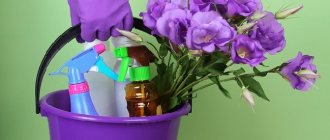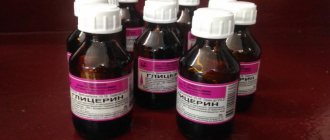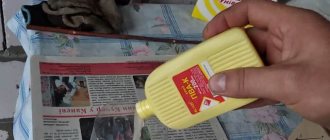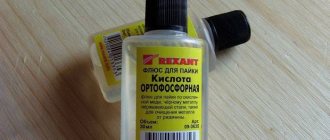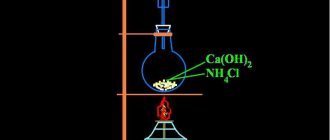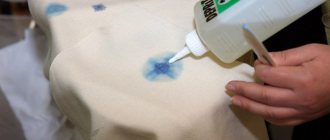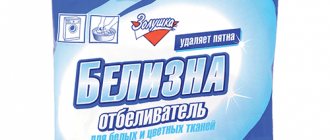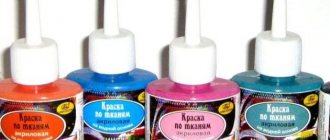Manufacturers offer a wide range of products for bleaching fabrics, but a large number of housewives use the usual “Whiteness”, the active ingredient of which is sodium hypochlorite, better known as bleach. The active substance can destroy the structure of the fibers of the material, so it is important to know how to use “Whiteness” to whiten clothes without the risk of damaging them.
An aqueous solution of bleach can, without boiling, eliminate traces of yellowness or a gray tint that white fabric acquires after numerous washes with dyed items. “Whiteness” will also help restore the original appearance of faded items.
The aggressive composition must be used correctly, otherwise the dense fabric will become thin and wear out quickly, and thin, delicate material can simply tear when washed after treatment with bleach. You should be extremely careful when using “Whiteness” when machine washing clothes, curtains, tablecloths and other things.
What items can be washed with white?
Every housewife should know that white bleach has a fairly aggressive composition. Therefore, using the product can not only get rid of stains, but also irreversibly damage things. Before using this product to whiten white things, you need to know exactly what fabric they are made of.
There are several important recommendations that will help you understand what things can be washed with bleach:
- Natural fabrics and cotton are most suitable for washing with bleach.
- It is not recommended to use this product when washing synthetics, since whiteness can corrode this fabric, and in frequent cases yellow stains remain on things.
- Do not wash delicate fabrics, leather or wool. The same thing can happen with these materials as with synthetics.
- If there is a print (pattern) on the fabric, then you should be more careful. Bleach whiteness can completely corrode the design, especially if the item was pre-soaked. It is also not recommended to wash colored items with the product, since bleach can simply corrode and wash the color from the fabric.
- If the stain is small, and the material has a fairly good density, then it is better to remove the contamination using sodium hypochlorite, pointwise.
First aid
In order to stabilize the victim’s condition as much as possible, it is important not only to follow safety precautions, but also to provide first aid correctly.
First of all, it is necessary to stop any contact with the substance, ventilate the room as quickly as possible: open windows, doors and vents. If possible, take the victim outside, place him in a position comfortable for him and seek specialized help. At the same time, you cannot leave a person alone, as he may lose consciousness. Even if a person says that he feels well, and his condition has externally stabilized, he still needs a doctor’s examination and hospitalization to take all necessary measures and order a full examination to make sure that internal organs are not damaged.
If a hazardous substance comes into contact with exposed areas of the body or mucous membrane, they must be washed immediately with clean water. It is best to rinse your eyes and skin for 15 minutes, which will ensure complete removal of the product and reduce the risk of burns. If a person is conscious, he needs to be provided with plenty of fluids, which will significantly reduce the white content in the body and further treatment will be much more effective.
If the victim is unconscious, he must be laid on his side. In this position, the victim has minimal risk of tongue sticking and vomit getting into the respiratory tract. In addition, it is important to monitor the victim’s pulse and breathing before the medical team arrives and, if necessary, perform resuscitation measures such as chest compressions and artificial respiration.
It is important to understand that if several people have been poisoned, this must be immediately reported to the dispatcher when calling a team of doctors. This is also necessary if children have been poisoned by a toxic substance.
If poisoning occurs through the gastrointestinal tract, then it is almost impossible to alleviate the person’s condition for those around him, so it is necessary to seek specialized help, lay the poisoned person on a flat surface, free the neck from constricting clothing and jewelry and turn the head to the side.
In case of poisoning by vapors of the substance, the victim should be taken out into the air, compressive clothing should be removed, and water or sweetened tea should be given to drink.
If whiteness gets into your eyes, you should rinse them thoroughly, if possible, drip them with an anti-inflammatory agent and consult an ophthalmologist.
How to wash things with white
If the housewife decides to use whiteness, then first of all it is recommended to carefully study the instructions for use, which are on each package of this product. It describes in detail what proportions must be observed when diluting sodium hypochlorite with water. By observing all the proportions, according to the instructions, you will be able to properly bleach things white, get rid of heavy stains and not damage the fabric.
How to hand wash and soak clothes in white
Before you start hand washing, it is advisable to sort all your items. It will be more convenient to sort clothes by type of material. It is worth considering that it is recommended to wash children's clothes separately, while the dosage of whiteness must be reduced, and the clothes themselves must be rinsed several times.
You need to use the product as carefully as possible; first, you should prepare gloves made of thick enough fabric so as not to damage the skin of your hands. It is recommended to avoid inhaling sodium hypochlorite vapors, and after washing it is best to ventilate the room well.
How to manually bleach in white:
- All fabrics for washing must be pre-soaked; a simple soap solution is perfect for this.
- It is necessary to prepare a container for washing, it can be a basin or a bathtub (if there is a large number of things).
- You need to pour as much water into the prepared container as is required for washing. The water should be cool; hot water should not be used with bleach.
- Add white to the water at the rate of 1 tablespoon per 3.5 liters of water.
- Now you need to add this solution to the soaked items and keep them there for 15-20 minutes, depending on the severity of the contamination. It is not recommended to soak things in white for longer than the specified time, otherwise you can damage the fabrics.
- After the elapsed time, things must be rinsed thoroughly, preferably several times.
If, after washing, the items are not washed or bleached as expected, then this procedure is repeated again. When the desired effect is achieved, you need to dry things in a ventilated place; it is recommended to do this outside or on the balcony.
How to wash white clothes in a washing machine
Whitening is an aggressive product that is not recommended to be used frequently, otherwise it can damage the washing machine. But sometimes bleach can be added when washing, you just need to know how to do it correctly.
Recommendations for automatic washing:
- the first thing that is recommended to do is to carefully study the instructions that came with the washing machine; if it states that you cannot use substances that contain bleach, then you should not do this;
- before adding the product to the machine, you must first soak all things in cold water;
- It is recommended to add the product to the drum, and not to a special compartment, so as not to harm the machine;
- You only need to choose a washing program where the water has a low temperature.
After the main wash, it is recommended to rinse all items several times using the appropriate program. When the washing is finished, it is necessary to clean the machine drum from traces of chlorine-containing products; this can be done by rinsing with fabric softener.
How to wash different types of stains with white
The stains on the fabric can be different; for some of them, the soaking time, the type of washing itself, or the preliminary preparation differ. Whitening things can be done using the standard method, but this will not work the first time. In order to make your work easier, it is recommended to familiarize yourself with some contaminants and ways to get rid of them using whiteness.
How to remove different types of stains with bleach:
- Oily spots. To make washing easier, it is recommended to apply crushed chalk to the stain before using bleach, then the fat particles will not be able to be absorbed into the fabric. This method is suitable for white items.
- Fruit juice contamination. Before bleaching things with sodium hypochlorite, you need to soak the fabric in warm soapy water, but you can use the bleach when the water and things have cooled completely.
- Grass stains. Herbal stains are quite difficult to remove from white clothes, but it can be done. It is necessary to first soak things in alcohol (you can use vodka) for 10-15 minutes. After such soaking, the fabric should be rinsed well with plain tap water, and then washed using white.
- Contamination from red wine. It is advisable to soak such stains immediately after they appear, but this is not always possible, so there is another way. It is necessary to wet the stain with warm water and rub it well with soap, then the stain will not be so visible. Before using bleach, it is recommended to wet the stain with ammonia.
- Blood stain. If, after a stain appears, you immediately wash it with simple soap, detergent or shampoo, then when washing using white, such contamination will be eliminated much faster.
It must be borne in mind that any stain will come off faster and easier if you start removing it right away, rather than putting it off.
Symptoms of poisoning
Poisonings are classified into chronic and acute.
Chronic poisoning develops with frequent, constant contact with a cleaning product. In this case, we are not talking about a large number of toxins. With chronic poisoning, a person develops a constant cough, respiratory diseases are activated, health deteriorates, dizziness and headaches occur, nausea, vomiting and convulsions may occur.
Acute poisoning can vary in severity:
- light;
- average;
- heavy.
In mild cases of poisoning, you may experience a burning sensation in the eyes, rapid breathing, watery eyes, and a sore throat. Often, all these symptoms disappear within 24 hours without any consequences.
In a moderate form of poisoning, all the above-mentioned symptoms are accompanied by coughing fits, chest compression, and shortness of breath.
The severe form is very dangerous, since all the symptoms of the mild and moderate form are present, but they are accompanied by episodes of uneven breathing. It is worth noting that they may not last long, but in any case, they disrupt the functioning of the body.
The most serious and dangerous poisoning is the result of a single exposure to large quantities of white. The victim develops convulsions, involuntary urination and defecation, and swelling of the face and limbs. Most often, this condition leads to death, when even timely assistance is not able to save a person.
If whiteness enters the respiratory system in large quantities, death is possible within 30 minutes.
Of course, poisoning with this dangerous drug rarely occurs at home, occurring in a severe and lightning-fast form, but such a possibility cannot be ruled out.
The most dangerous situation that can happen at home is ingestion of the white stuff, especially if the product gets into the digestive tract of a small child. Unfortunately, curious kids are not deterred by the strong smell of some cleaning products.
In such a situation, it is important to promptly recognize the symptoms of white matter poisoning, which has entered the body through the digestive tract. A person immediately experiences severe and acute pain in the mouth due to a burn to the mucous membrane. After a few minutes, this pain moves to the esophagus and stomach, and vomiting with blood develops, which does not alleviate the victim’s condition. Body temperature rises sharply and reaches maximum levels. A person immediately experiences all the symptoms of intoxication of the body: confusion, convulsions, pain in the intestines, shortness of breath, dizziness.
Getting white into your eyes most often does not cause serious consequences if you immediately rinse them with clean water. But if the product gets into the eyes and no measures are taken, then this is fraught with serious complications. A person's eyeball turns red, severe itching and burning appears, and if a large amount of white matter gets into the eye, acute pain may be present.
White for floor cleaning and home disinfection
It can be used as a home and floor disinfectant, but before doing so, you must carefully review the precautions:
- Bleach is a substance that can leave burns on the body, because the composition of the bleach is quite aggressive. Therefore, before using this product, you must wear household gloves, put a mask (respirator) on your face, and after disinfection, you must thoroughly ventilate the room.
- It should be stored in a dark and cool place, away from animals and children. Bleach is stored for 1 year, after this time the product must be thrown away.
- It is prohibited to use sodium hypochlorite for self-treatment; this can cause great harm to a person and his health.
After learning the precautions, you can wash the floors in your house using whitewash. For this, a ratio of 1:10 is used, where 1 is bleach and 10 is water. Based on this, 100 ml of bleach is used per 1 liter of water. After washing the floor, it is recommended to rinse it again with plain water and ventilate the room well.
Treatment
After poisoning with a chlorine-containing agent, you should not hope that your health will stabilize on its own. Timely assistance provided by specialists can not only improve the patient’s well-being, but also save his life.
Therapy is carried out in specialized medical institutions. Depending on the severity and method of poisoning, doctors prescribe individual treatment:
- introduction of drugs that stabilize heart function;
- IVs supporting lung function;
- gastric lavage with a probe;
- intravenous administration of medication to prevent further development of poisoning;
- removal of the stomach, if there is a severe burn and surgical intervention is unavoidable;
- infusion therapy;
- administration of the antidote Sodium thiosulfate.
Poisoning with household chemicals requires urgent hospitalization, as the victim may experience negative consequences. The most common outcome is:
- pneumonia;
- emphysema;
- partial and complete loss of vision;
- irreversible disorders of the digestive system;
- pharyngitis;
- bronchitis;
- decompensated stage of cor pulmonale.
The duration of treatment depends on the complexity of the poisoning, the condition of the victim and individual indicators.
Is it possible to wash dishes with white?
You can also use sodium hypochlorite to wash dishes. Only those proportions indicated on the packaging are not suitable for this. For washing dishes, the same ratio is used as for disinfecting the floor - 1:10.
You should not constantly wash dishes with a bleach solution; it is recommended to do this only when necessary. Bleach can be used if there is a sick person in the house. By washing dishes with sodium hypochlorite, you can easily get rid of the virus, thereby protecting others living in the house from the disease.
Whiteness got on the fabric, what should I do?
When chlorine gets on the fabric, it must be neutralized immediately, otherwise it can form a hole in the fabric. The main task is to preserve the fabric, prevent it from being damaged further and, without fear, resort to the services of powder. What do we have to do?
- Rinse the damaged stain under running, cold water. Try to remove as much of the white residue as possible.
- After this, treat the contaminated area of clothing with baking soda. It is necessary for the soda to turn into a thick paste; to do this, add water and mix everything.
- Leave the paste on the stain until it dries, then remove it with a brush.
After the procedure, it is necessary to take care of restoring the color range of the material. Alcohol can solve this problem perfectly. To do this you need:
- Soak a cotton swab in alcohol.
- Wipe the section of fabric near the damaged stain with white (in a circle).
- In this way, the composition of the alcohol will be able to soften the dye of the matter and redistribute it to the colorless zone. Then wash the item using powder.
Sprinkle baking soda on a fresh bleach stain.
Video material
The product “Belizna” is distinguished by its effectiveness and versatility. But due to the fact that the product also has side effects, and is also chemically aggressive and unsafe, it is worth thinking about using more harmless and modern drugs, the risk of using which is minimal, and the result is no worse.
Restore clothes using a marker
If the fabric is damaged by chlorine, but the stain is small and not very noticeable, it can be hidden with a marker or pencil. This is not difficult to do: you need to purchase a marker that matches the color of the damaged clothing. Next, you should sketch the stain with it, after the procedure, turn the material inside out and, using damp gauze, iron the sketched area with an iron.
An important detail: if bleach has damaged black fabric, it can be removed with ordinary mascara or drawing ink, the properties of which are perfectly absorbed into the material. Therefore, during normal washing with powder, it cannot be washed off, thus you don’t have to worry about white, colorless marks.
You can purchase a special fabric marker in the store.

